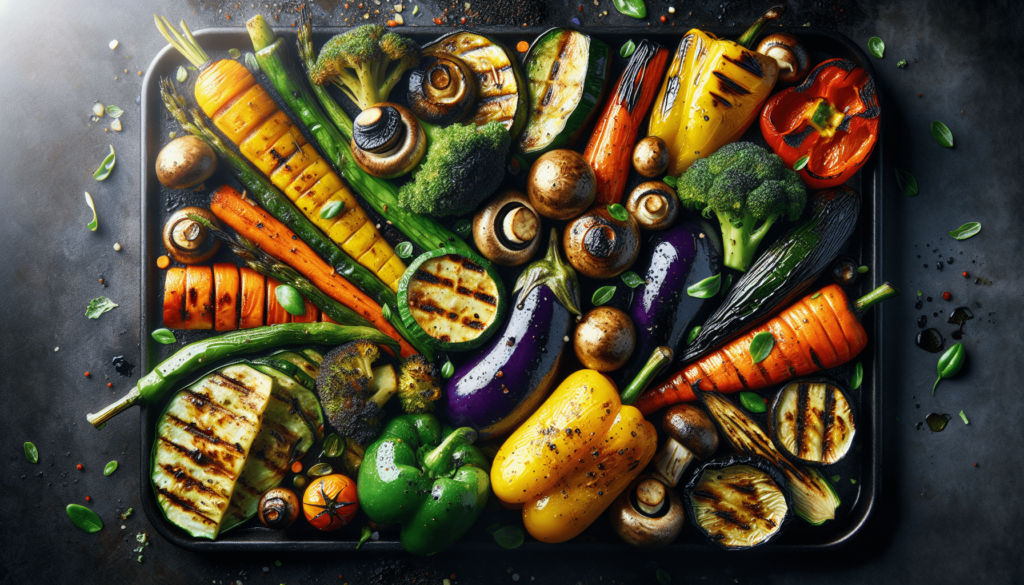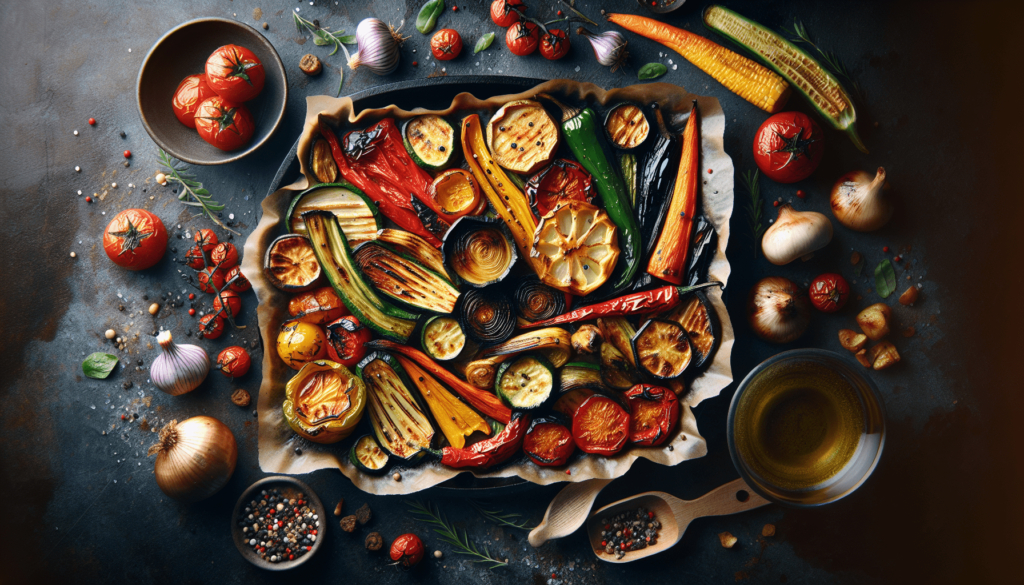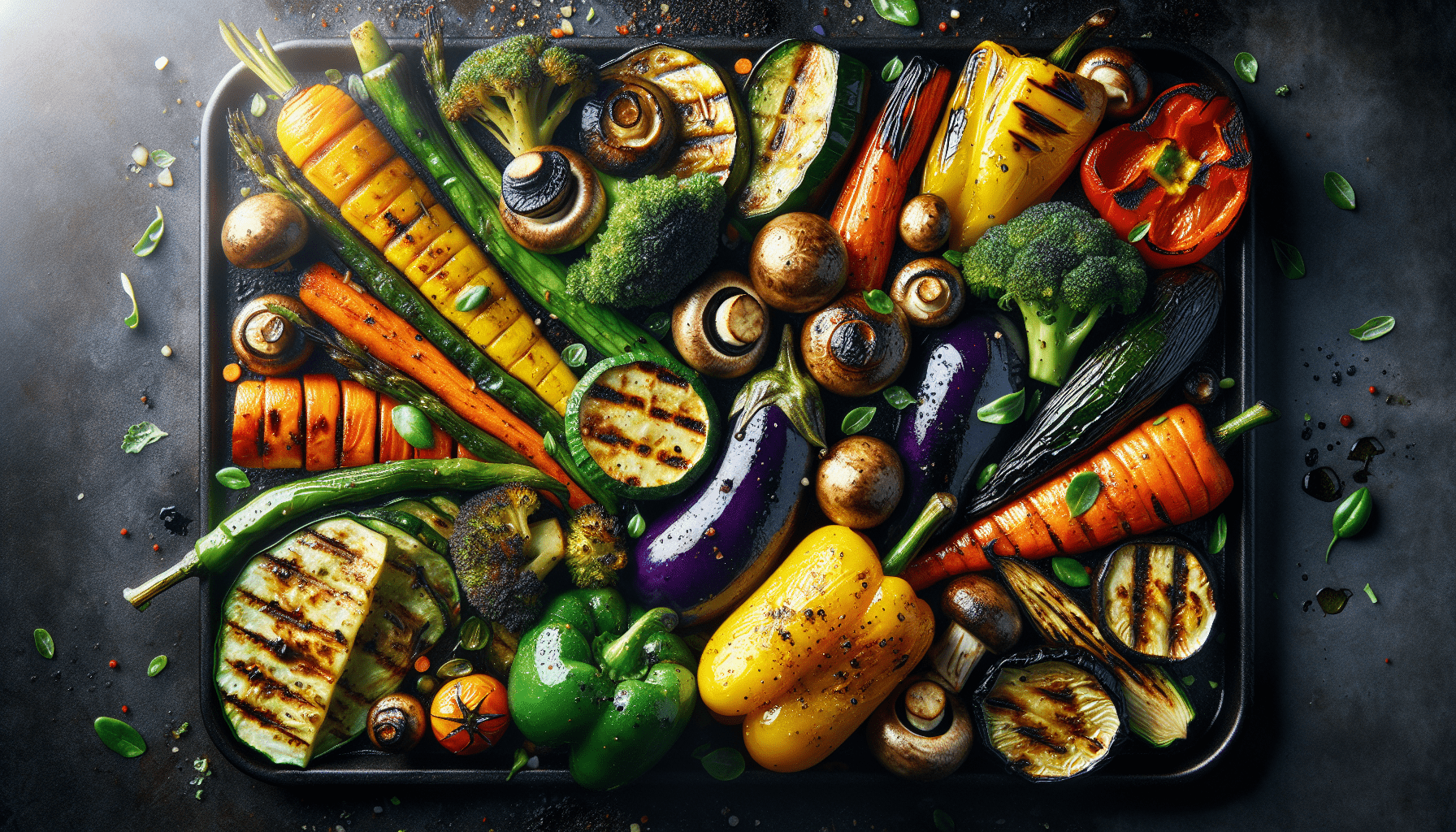Imagine effortlessly preparing delicious and nutritious vegetarian and vegan meals with the help of your trusty smart oven. Forget about the hassle of scouring through countless recipes or spending hours in the kitchen. With the innovative features of your smart oven, you can whip up mouthwatering plant-based dishes that will impress both your taste buds and your guests. From roasted vegetables to baked tofu, this article will guide you on how to make the most of your smart oven and take your vegetarian and vegan cooking to the next level.

Understanding Smart Ovens
As technology continues to advance, so too does the functionality of our kitchen appliances. One such advancement is the introduction of smart ovens. But what exactly is a smart oven? A smart oven is an innovative kitchen appliance that integrates advanced features and connectivity options to enhance your cooking experience. These ovens are equipped with built-in sensors, touchscreens, and even Wi-Fi capabilities, allowing you to control and monitor your cooking remotely through a smartphone app or voice commands.
Features of a Smart Oven
Smart ovens boast an array of impressive features that set them apart from traditional ovens. For starters, they offer precise temperature control, ensuring that your dishes are cooked to perfection every time. With the help of built-in thermometers and temperature probes, smart ovens can also provide real-time temperature readings and alert you when your food has reached the desired temperature.
Another notable feature is the ability to preheat your oven remotely. Imagine being able to preheat your oven on your way home from work, ensuring that it’s ready to go as soon as you step through the door. Smart ovens also have customizable presets for common dishes, making it easier than ever to achieve consistent results with your favorite recipes.
Advantages of Using a Smart Oven
There are numerous advantages to using a smart oven, especially when it comes to cooking vegetarian and vegan meals. First and foremost, smart ovens offer improved health and nutrition benefits. By allowing for precise temperature control, these ovens can help retain important nutrients in your plant-based dishes, ensuring that they are both delicious and packed with essential vitamins and minerals.
Smart ovens are also environmentally sustainable. By using energy-efficient features like convection cooking and timed cooking functions, these ovens can reduce overall energy consumption, making them more eco-friendly than traditional ovens. Additionally, some smart oven models offer compatibility with renewable energy sources, further reducing your carbon footprint.
Ethical considerations are another advantage to using a smart oven for vegetarian and vegan cooking. By eliminating the need to use animal products, you are actively contributing to the reduction of animal cruelty and the exploitation of animal resources. Smart ovens offer a convenient way to uphold your ethical values while still enjoying delicious and nutritious meals.
Lastly, using a smart oven can be cost-effective in the long run. With precise temperature control and customizable presets, you can avoid overcooking or burning your dishes, thereby reducing food waste. This not only saves you money but also helps promote sustainable cooking practices.
Choosing the Right Recipes
Once you have your smart oven set up and ready to use, it’s time to explore the world of vegetarian and vegan recipes. There are countless sources available for finding delicious plant-based meals, both online and in cookbooks. Websites, blogs, and social media platforms dedicated to vegetarian and vegan cooking are great places to start your recipe search. You can also join online communities and forums to connect with like-minded individuals who can share their favorite recipes and tips.
When choosing recipes, it’s important to consider your dietary preferences and any restrictions you may have. Think about the types of flavors and cuisines you enjoy and look for recipes that align with your taste preferences. Consider any dietary restrictions you may have, such as gluten intolerance or nut allergies, and find recipes that accommodate those needs.
Furthermore, when selecting recipes for your smart oven, it’s essential to find ones that are suited for its specific features. Some smart ovens have specialized cooking modes, such as air frying or dehydrating, which can open up a whole new world of possibilities for preparing plant-based dishes. Be sure to choose recipes that make the most of your oven’s capabilities.

Getting Started with Your Smart Oven
Before diving into the world of vegetarian and vegan cooking with your smart oven, it’s important to familiarize yourself with its functionality. Read through the user manual and take note of all the features and settings available to you. Understanding how your smart oven works will help you make the most out of its capabilities.
Once you have a good grasp of its functionality, it’s time to set up and preheat your smart oven. Follow the manufacturer’s instructions for installation, making sure to place it in an appropriate location in your kitchen. Make sure the oven is properly connected to your home’s Wi-Fi network, as this will enable you to access the full range of smart features.
When preheating your oven, be sure to take advantage of the remote preheating capability. This way, you can have your oven preheated and ready to go by the time you’re ready to start cooking. Preheating your oven ensures that your dishes are cooked evenly and helps achieve optimal results.
Choosing the Appropriate Cooking Mode
Smart ovens offer a range of cooking modes to choose from, each suited for different types of dishes and cooking techniques. Understanding when and how to use each cooking mode will help you achieve the best results possible.
When it comes to baking and roasting, your smart oven’s convection cooking mode is your best friend. Convection cooking uses a fan to circulate hot air within the oven, resulting in faster and more even cooking. This is particularly useful when baking bread or roasting vegetables.
For grilling and broiling, your smart oven likely has a specialized cooking mode that provides direct heat from the top heating element. This mode is perfect for creating a crispy top layer on dishes like vegan burgers or roasted eggplants.
If air frying or dehydrating is something you’re interested in, make sure to look for a smart oven that offers these modes. Air frying allows you to achieve crispy, delicious results with minimal oil, making it a healthier alternative to traditional deep frying. Dehydrating, on the other hand, is ideal for making homemade dried fruits or vegetable chips.
Steaming and boiling are also possible with some smart ovens, which offer specific cooking modes and accessories for these techniques. Steaming your vegetables helps retain their nutrients and vibrant colors, while boiling can be used for cooking pasta or grains.
Lastly, many smart ovens offer slow cooking and pressure cooking capabilities. These cooking modes are perfect for creating flavorful plant-based stews, soups, and curries. Slow cooking is a hands-off method that allows flavors to develop over time, while pressure cooking achieves similar results in a fraction of the time.
Optimizing Smart Oven Settings
To make the most out of your smart oven, it’s important to understand how to optimize its settings for vegetarian and vegan cooking. Adjusting the temperature and cook time can have a significant impact on the outcome of your dishes.
Start by experimenting with different temperature settings to find the one that works best for your recipes. Considerations such as the type of food being cooked and the desired level of browning or crispness will determine the ideal temperature. Keep track of your adjustments and the results to develop a better understanding of your smart oven’s temperature range.
Creating customized presets for vegetarian and vegan dishes can be a game-changer. Once you’ve found the perfect temperature and cook time for a particular recipe, save it as a preset. This way, you can easily reproduce the same results every time you cook that dish. Custom presets are especially useful for recipes with specific timing requirements or multiple cooking stages.
Take advantage of your smart oven’s smart features and connectivity options. Some models allow you to control your oven remotely through a smartphone app or even through voice commands. This means you can start, stop, and monitor your cooking from anywhere in your home. Additionally, some smart ovens offer compatibility with other smart devices, allowing for easy integration into your smart home ecosystem.
Tips for Successful Cooking
While using a smart oven can certainly enhance your cooking experience, there are a few tips to keep in mind for successful results. Proper food preparation is key to achieving the best possible flavors and textures. Ensure that your vegetables are washed, peeled, and chopped as necessary before cooking. For grains and legumes, consider soaking them beforehand to reduce cooking time and improve digestibility.
Rack placement is also crucial for even cooking. Consult your smart oven’s user manual for recommendations on the best rack position for different cooking modes. For example, when using the convection cooking mode, it is typically recommended to place the food on the middle rack to ensure even distribution of heat.
Using suitable cookware is essential for optimal results. Non-stick or stainless steel pans are best for baking and roasting, while cast iron pans are excellent for heat retention during grilling or broiling. Make sure to use oven-safe containers for dishes that require high temperatures, and always follow the manufacturer’s guidelines for cookware compatibility.
Monitoring and testing for doneness is important to avoid overcooking or undercooking your dishes. Use a meat thermometer or a smart oven’s built-in probe to check the internal temperature of cooked food, ensuring that it has reached a safe temperature. For baked goods, use the toothpick test by inserting a toothpick into the center of the item—if it comes out clean, it is fully baked.
Adapting Traditional Recipes
If you have a collection of traditional recipes that you love, don’t worry! Many traditional recipes can be easily adapted to vegetarian or vegan versions. By substituting animal-based ingredients with plant-based alternatives, you can create delicious and cruelty-free versions of your favorite dishes.
For dairy or egg-based recipes, there are numerous vegan substitutes available. For example, replacing cow’s milk with almond or soy milk, or using flaxseed or applesauce instead of eggs. These substitutes retain the desired flavors and textures while providing a suitable alternative for vegan cooking.
In addition to ingredient substitutions, modifying cooking techniques can also be necessary. For example, when making vegan pancakes, it’s important to cook them on a lower heat and be patient, as they may take longer to cook than traditional pancakes. Modifying cooking techniques can help achieve the desired results while still maintaining the essence of the original recipe.
Maintaining flavors and textures is another crucial aspect of adapting traditional recipes. This can be done through the use of spices, herbs, and seasonings that add depth and complexity to your dishes. Don’t be afraid to experiment with different flavor combinations to make your vegetarian and vegan versions just as satisfying as the originals.
Exploring New and Exciting Recipes
While adapting traditional recipes is a great way to incorporate vegetarian and vegan options into your cooking repertoire, don’t be afraid to explore new and exciting recipes that are specifically designed for plant-based eating. There is a wide variety of creative plant-based alternatives that can open up a whole new world of flavors and textures.
Consider trying out flavorful vegetarian and vegan mains that go beyond the typical salads and stir-fries. From hearty lentil and mushroom burgers to flavorful eggplant parmesan, there are countless options to satisfy your taste buds. Experiment with different spices, herbs, and cooking techniques to create dishes that are both nutritious and delicious.
And don’t forget about dessert! There is a plethora of mouthwatering desserts that can be made without animal products. From vegan chocolate mousse to dairy-free ice cream, you can indulge in sweet treats guilt-free. Explore recipes that use ingredients like coconut milk, tofu, or nut butters to create rich and satisfying desserts.
For those who love trying cuisines from around the world, vegetarian and vegan options abound. Explore the flavors of India with fragrant curries and vegetable biryanis. Delight in the freshness of Mediterranean cuisine with tabbouleh and roasted vegetable dishes. Asian cuisines offer a treasure trove of vegan possibilities, from tofu stir-fries to sushi rolls filled with colorful vegetables.
Smart Oven Maintenance and Care
To ensure the longevity and optimal performance of your smart oven, it’s important to follow proper maintenance and care practices. Cleaning the oven regularly is essential to prevent the build-up of grease, food particles, and odors. Consult the user manual for specific cleaning instructions, as some oven interiors can be cleaned with mild dish soap and water, while others may require specialized oven cleaners.
Regular maintenance and troubleshooting are also important for keeping your smart oven in top shape. Check for any signs of wear or damage, such as frayed cords or malfunctioning buttons, and address them promptly. Refer to the user manual for troubleshooting guides or contact customer support for assistance.
Lastly, don’t forget to take advantage of the warranty that comes with your smart oven. Register your oven with the manufacturer to ensure that you can easily access warranty services if needed. Familiarize yourself with the warranty terms and conditions to understand what is covered and for how long. If you encounter any issues with your oven, don’t hesitate to reach out to customer support for help and guidance.
In conclusion, using a smart oven to cook vegetarian and vegan meals can revolutionize your culinary experience. With advanced features, precise temperature control, and a range of cooking modes, smart ovens allow for convenient and efficient cooking while promoting health, sustainability, and ethical considerations. By exploring recipe sources, understanding your oven’s functionality, and optimizing its settings, you can unlock the full potential of your smart oven and create delicious plant-based meals for years to come.
